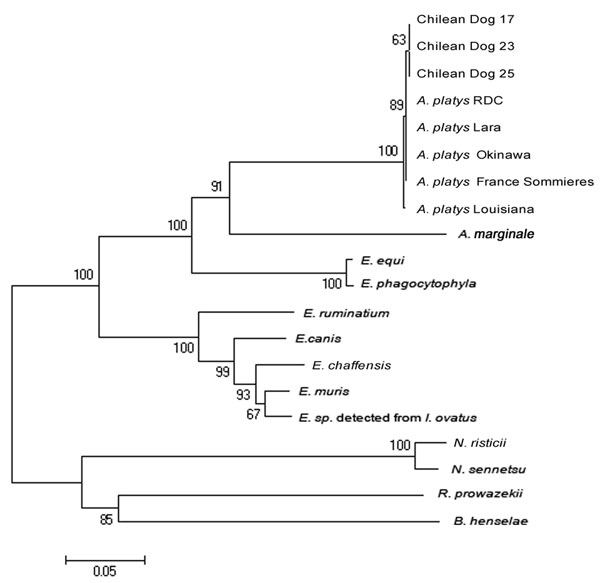Volume 13, Number 9—September 2007
Dispatch
Anaplasma platys in Dogs, Chile
Figure 2

Figure 2. Phylogenetic relationship between 3 Chilean Anaplasma platys strains and other strains of the families Rickettsiaceae and Anaplasmataceae based on the groESL gene nucleotide sequences. GenBank accession nos. of groESL sequences used to construct the phylogenetic tree were the following: A. platys France Sommieres AY044161; A. platys Lara Venezuelan dog AF399916; A. platys from Rhipicephalus sanguineus ticks in the Democratic Republic of Congo AF478129; A. platys from a dog in Okinawa, Japan AY077621; A. platys from a dog in Louisiana, USA AY008300; A. marginale AF165812; Ehrlichia equi AF172162; E. phagocytophyla U96729; E. chaffeensis L10917; E. canis U96731; E. muris AF210459; Ehrlichia sp. from Ixodes ovatus AB032711; E. ruminantium U13638; Neorickettsia risticii U96732; N. sennetsu U88092; Rickettsia prowazekii Y15783; and Bartonella henselae U96734. Scale bar at the lower left indicates 0.05 substitutions per nucleotide.